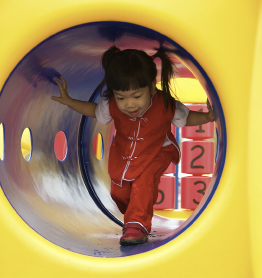Inquiry 3
| Site: | MoodleHUB.ca 🍁 |
| Course: | Early Learning and Child Care 30 Modules |
| Book: | Inquiry 3 |
| Printed by: | Guest user |
| Date: | Thursday, 18 December 2025, 10:34 AM |
Description
Created by IMSreader
1. Inquiry 3
Session 1: The Importance of Child Care Providers
Inquiry 3: The Roles of a Child Care Provider

© matka_Wariatka/shutterstock
Most of a child care provider’s time is spent in one (or more) of the following four categories:
- caregiving
- educating
- organizing
- connecting with families and the community
Caregiving: Basic Care and Nurturing
Basic Care
Basic care involves ensuring children eat healthy foods, get enough rest, and are in safe, secure physical environments.
Child care providers working with younger children spend much of their time feeding children or helping them learn to feed themselves, serving food, and cleaning up afterward. But, as you will see in this course, the role of a child care provider is much more than looking after children’s physical needs.
Nurturing
Nurturing involves providing children with the warmth, support, encouragement, and guidance they need. Positive relationships among children and child care providers are essential for children’s healthy growth. Child care providers are often the first people outside the family with whom children have caring relationships.
Educating
Educational responsibilities involve helping children learn or gain new skills or understanding. For example, a child care provider might help children learn to zip their jackets.
Children learn best when they have the opportunity to explore and practise. Therefore, as a child care provider, it is critical that you provide children with the time they need to learn new skills, the space they need to practise, age-appropriate toys and equipment, and the encouragement and support they need to actively explore and learn.
Organizing
Organizational responsibilities are those required to set up and maintain the child care environment and program.
There are lots of activities that need to be done “behind the scenes” within a child care facility to ensure quality care for children. Some examples include planning for play opportunities, setting up materials for a play corner, and cleaning up after an activity. As a child care provider, it is important that you share in these tasks.
Connecting with Families and the Community
Another important role of child care providers is linking with families and the community. Children do better in child care when there are positive relationships between the child care providers and the parent(s) and/or guardian(s). It is important that the child care provider and the parent(s) and/or guardian(s) learn from each other about the child’s needs and development.
It is also important for the child care provider to know and share information about resources in the community that can help the child care centre and the parent(s) and/or guardian(s).
From GESTWICKI/BERTRAND. Essentials of Early Childhood Education: 2nd Edition. 107–109. © 2003 Nelson Education Ltd. Reproduced by permission. <www.cengage.com/permissions>;
Primary and Support Roles
primary role: a role in which a person is directly and actively engaged in the supervision, safety, well-being, and development of children
support role: a role in which a person is not considered to be directly responsible for the care and supervision of children
The roles of child care providers are further categorized into either primary roles (sometimes called primary staff members) or support roles (sometimes called support staff members).
Caregiving and educating are primary roles. According to the Child Care Licensing Regulation, only primary staff members can be included in staff-to-child ratios.
Organizing and connecting with families and the community are support roles. Other support roles include preparing food for children, cleaning the child care facility, and planning for and setting up educational play activities for children. According to the Child Care Licensing Regulation, support staff members cannot be included in staff-to-child ratios.
1.1. Learning Activity 3
Session 1: The Importance of Child Care Providers

© Quavondo/iStockphoto
Learning Activity 3: A Typical Day at the Child Care Facility
Focus
Thinking about the many activities and events that take place in a typical day at a child care centre gives you an opportunity to think about the complex and important role of the child care provider.
Directions
![]()
Step 1: Go to a child care facility and observe the activities of a child care provider. An alternative to completing this learning activity in a child care facility is to have a conversation with a child care provider about the tasks she or he performs.
Step 2: Complete Part 1 of Learning Activity 3: A Typical Day at the Child Care Facility.
Step 3: Complete Part 2 of Learning Activity 3: A Typical Day at the Child Care Facility. This is your written reflection.
Important: You should always complete learning activities at a child care facility or with child care providers in an ethical and respectful way. For example, if you have completed “A Typical Day at the Child Care Centre” through observing a child care provider, offer to show your completed document to the provider.
Step 4: Review the Student Rubric for Learning Activity 3: A Typical Day at the Child Care Facility. Assess the quality of your written reflection and make any necessary adjustments. Complete the Reflections section in the rubric document.
Checking In
Save your completed learning activity and your self-assessment in the appropriate sub-folder of your course folder.